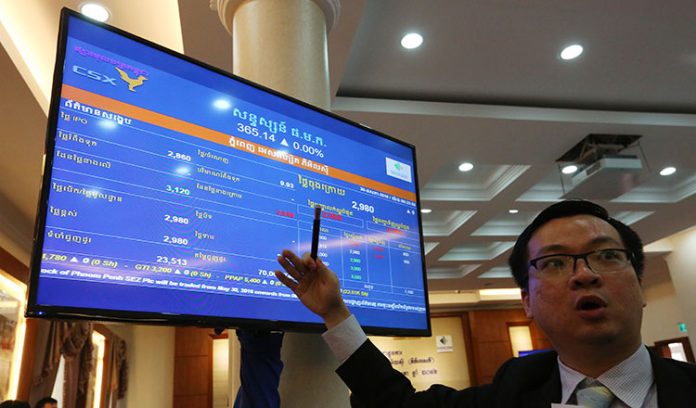Comparing Cambodia’s Stock Market to Other ASEAN Exchanges
Opportunities, Challenges, and Regional Investment Insights
As Southeast Asia continues to gain global attention for its economic growth and strategic trade routes, its stock markets are drawing increasing interest from investors. Cambodia, while relatively new to the stock exchange scene, is steadily building its capital market infrastructure. When compared to more mature ASEAN exchanges such as those in Singapore, Thailand, and Malaysia, Cambodia’s stock market presents a unique mix of emerging potential and long-term growth opportunities.
In this article, we compare the Cambodia Securities Exchange (CSX) with other key ASEAN exchanges to understand how they differ in size, accessibility, regulatory landscape, and investor opportunities—and what that means for international businesses and foreign investors.
1. Overview of Cambodia’s Stock Market
Established in 2011, the Cambodia Securities Exchange (CSX) is one of the youngest stock markets in Southeast Asia. It currently has a modest number of listed companies—mostly local conglomerates and infrastructure firms—but has shown consistent growth over the past decade.
As of early 2025, CSX has:
-
Over 20 listed companies (including equity and corporate bonds)
-
Increasing daily trade volumes, although still modest compared to regional peers
-
Focus on long-term capital formation rather than short-term speculation
CSX is jointly owned by the Cambodian Ministry of Economy and Finance and the Korea Exchange, which supports the platform’s technical development and compliance framework.
Related: Why Cambodia’s Stock Market Is Attracting Foreign Investors in 2025
2. Key ASEAN Stock Exchanges at a Glance
Here’s a brief overview of the major ASEAN stock exchanges to set the comparative context:
| Exchange | Country | Market Cap (USD) | Listed Companies | Year Founded |
|---|---|---|---|---|
| SGX | Singapore | ~$650 billion | ~700+ | 1973 |
| SET | Thailand | ~$600 billion | ~800+ | 1975 |
| Bursa Malaysia | Malaysia | ~$400 billion | ~900+ | 1960 |
| IDX | Indonesia | ~$700 billion | ~900+ | 1977 |
| PSE | Philippines | ~$300 billion | ~270+ | 1927 |
| CSX | Cambodia | ~$2.5 billion | ~20+ | 2011 |
Cambodia clearly lags behind in terms of size and liquidity—but that doesn’t mean it lacks opportunity.
3. Growth Potential of Cambodia’s CSX
Despite being the smallest among ASEAN exchanges, CSX is growing at a faster relative pace than most of its peers.
Key growth drivers include:
-
Government incentives for listing
-
Rising foreign direct investment (FDI)
-
Digital platforms allowing retail investor participation
-
A push for financial literacy and capital market education
The Cambodian government has also reduced corporate income tax rates for newly listed companies and offers tax incentives to attract SMEs to the market.
Explore More: How to Start Investing in Cambodian Stocks: A Beginner’s Guide
4. Investor Accessibility and Regulations
One of Cambodia’s main challenges is low market liquidity, driven in part by limited investor awareness and a smaller institutional investor base. However, unlike some ASEAN countries with complex regulatory barriers, Cambodia is working to streamline foreign investor entry.
Here’s how Cambodia stacks up:
| Factor | CSX (Cambodia) | SET (Thailand) | SGX (Singapore) |
|---|---|---|---|
| Foreign Ownership Limit | Up to 100% in most cases | Varies (49%-100%) | 100% |
| Tax Incentives | Yes (for listed companies) | Some sector-based | Advanced REIT & ETF benefits |
| Ease of Account Setup | Moderate (through local brokers) | High | High |
| Regulatory Oversight | SECC (growing capacity) | SEC Thailand | MAS (world-class) |
Cambodia-Agent.com helps foreign investors navigate licensing, market entry, and legal procedures, reducing the friction that sometimes deters newcomers.
Related: Navigating Cambodian Regulations: Why Agent Services Are Essential
5. Sector Comparison: Where the Opportunities Lie
Cambodia’s listed companies are currently focused on banking, telecom, real estate, and infrastructure, while larger ASEAN exchanges have more diversified portfolios that include:
-
SGX: Tech, healthcare, REITs, shipping
-
SET: Energy, tourism, consumer goods
-
IDX: Agriculture, manufacturing, mining
While Cambodia lacks diversity, it offers first-mover advantage in underpenetrated sectors such as:
-
Renewable energy
-
E-commerce logistics
-
Green infrastructure financing
As more Cambodian startups and SMEs mature, the CSX is expected to see broader sector representation.
Read: Cambodia’s Tech Startup Scene: Fueling the Next Wave of Economic Innovation
6. Risk Factors & Challenges
No emerging market is without risk. Investors should be aware of:
-
Lower transparency compared to Singapore or Malaysia
-
Currency volatility
-
Political and policy shifts
-
Limited exit options due to low trading volumes
However, these risks are often priced into the low valuations found on CSX, giving value investors long-term upside potential.
7. Cambodia’s Stock Market in the Regional Context
Cambodia’s strategy is not to compete head-to-head with larger exchanges, but to serve as a gateway for long-term capital investment into domestic enterprises and infrastructure projects.
The government’s vision for 2030 includes:
-
Expanding CSX to 100+ listed companies
-
Increasing local and foreign investor participation
-
Positioning Cambodia as a niche emerging market in ASEAN
With support from platforms like Cambodia-Agent.com, international investors and businesses can take advantage of early-stage opportunities while navigating risks effectively.
Final Thoughts
Cambodia may not yet rival the major ASEAN stock exchanges in size or liquidity, but it holds strategic value for those looking to tap into Southeast Asia’s next growth frontier. With progressive policies, a stable government, and an evolving investor ecosystem, Cambodia’s stock market is poised to gain traction in the years ahead.
As an early mover, you don’t just invest in stocks—you invest in Cambodia’s future.
